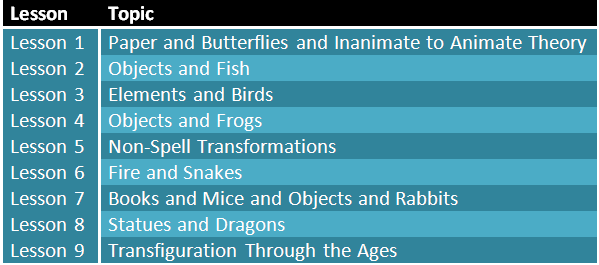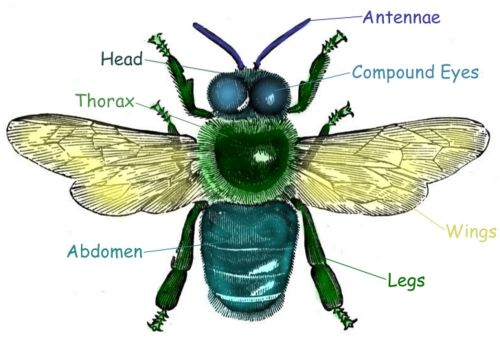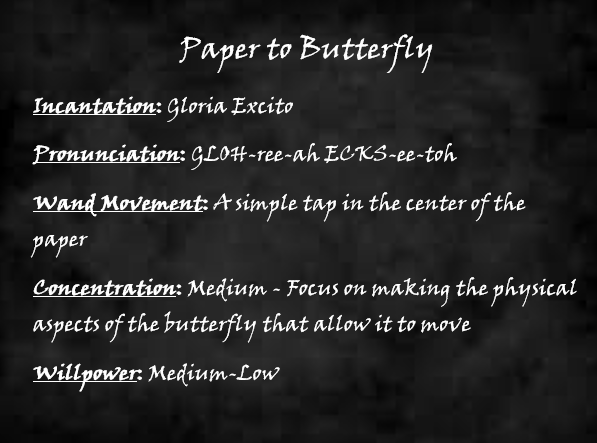Announcements
Welcome to Transfiguration!
11/25/22 - PA Applications will open January 1. Applicants should have completed all Year One assignments, including essays, and have at least an 85% in the course.
Please read the following before beginning this course or reaching out to Professor Mitchell or her PAs with questions.
1. If you have any questions about the course content, please reach out to any of the Transfiguration 301 Professor's Assistants. A list of current PAs can be found on the right side of this page. Please note that owls asking for the specific answers to quiz or essay questions will not be tolerated.
2. If you have submitted an assignment and are waiting for your grade to be returned, please do not reach out to the professor or PAs asking when it will be graded. Our grading team is composed entirely of volunteers and grading can occasionally take a little while due to both the number of assignments submitted and the real life commitments of our team. Please be patient.
3. If you believe your assignment has been graded in error, please reach out to either Professor Mitchell or Dane Lautner with the Grade ID (found in your Gradebook) for the assignment in question along with an explanation of what you believe is incorrect. Please ensure your message is respectful or your appeal will be denied.
4. If you have any comments or feedback about the course, please send an owl to Professor Mitchell.
Lesson 1) Inanimate to Animate Theory
Inanimate to Animate Theory
Welcome
Professor Mitchell tapped her quill on the table anxiously as she waited for the Third Years to arrive. The start of a new term was always stressful. Would she remember how to teach? Would the students like the concepts? Would Peeves actually leave her classroom alone for once? As the professor heard the door creak open, she bounded to her feet and hurried the students to their seats. “Come in! Sit down! It’s time to get your brains out of break mode and back to thinking about the wonderful world of transfiguration!”
Introduction
I hope you are all excited to be back as this year we will be delving into inanimate to animate transformations! We’re hopping right into it today with a little theory and the Paper to Butterfly Transformation. This year’s lessons will be set up slightly different from those in previous years. We will be moving away from the descriptions of each of your target objects as outside of school, this research will typically be the responsibility of the caster. While it’s pretty easy to figure out all of the important details of an inanimate object, creatures can get a little more difficult. It is for that reason that this year I will be giving you some more general information on various types of creatures and what goes on within the body. This should let you more quickly and easily break down target creatures if you ever have to perform a new transfiguration on the spot. Below you will also find your schedule for the year.

Theory
Now I know I’ve bored you all over the last couple years with spellcasting theory, but I ask you to bear with me as this year’s theory is a little more intriguing. You all should remember that life is one of the Five Principal Exceptions of Gamp’s Law. Knowing that, the creatures we will be attempting to produce this year will not be fully living, breathing things. Instead, our goal will be to make these creatures appear as life-like as possible. They will have no need to eat and no need to breathe, as they cannot die, but it is possible to transfigure an animal that will go through these motions. This will require a little extra concentration, but I will go over that in a moment. The Law of Life also prevents your creature from reproducing or growing in any way. Cutting it may cause it to bleed, but the body will not replenish that blood and the heart will not pump it throughout the body. It also will not clot, meaning the creature will simply bleed dry. Unfortunately it is also not possible to take parts of a transfigured creature to use in any potions. While transformation alters the molecular structure and cells of a thing, it is impossible to code the complete DNA of the creature from scratch and imbue it with magical properties, which is what makes it useable in potions. Even attempting this is incredibly dangerous. You may remember our discussion back in Year One concerning Gamp’s Law of Food and how eating a conjured or transfigured food item could be harmful, as the thing that you are eating is really just the starting object in disguise. This concept is remarkably similar.
With all of this in mind, in order to make a creature that appears as life-like as possible, one must remember their complexity. Physically, animals are many, many times more complex than even the most intricate of objects. They contain body systems that allow them to eat, move, feel, and react that must all be working together in perfect harmony. Creating all of this correctly requires an immense amount of concentration. Many will often find that making a creature that appears realistic on the outside is not all that difficult of a feat. It is the same method of concentration you’ve been using over the last two years. It is once you attempt to get that creature to move and interact that you will discover the shortcomings of the spell. Now, you will not have to concentrate on every single aspect of the body specifically to make it all work, but you do need to know generally how the body is meant to function if you want to get close to creating the true appearance of life. The more you know about what needs to be happening, the less you are relying on the spell itself - the incantation, wand movement, magical power - to fill in the gaps.
The final thing that will make your creature appear truly alive is by creating a consciousness. While last year we employed our willpower to overcome the consciousness of our target creature, this year we will be using it to create that consciousness. This involves pushing your magic to give the creature some basic form of thought. Taking into account everything we talked about last year regarding mental complexity, the easiest thing you will be able to give your creature is sentience, or the ability to experience and react to the world subjectively. Much more than that is extraordinarily difficult and nears the edge of impossible. No matter how much you try, you will never fully be able to give the creature a mind or personality of its own. Similar to the way in which magical portraits can only think and interact with what was imbued by their painter when they were created, transfigured creatures can only think with what you give them upon casting, never fully having the individuality of thought that a natural creature would posses.
Insects
Insects, or creatures of the class insecta, are invertebrates with three part segmented bodies. These three parts of the body are the head, tho rax, and abdomen. To make up for their lack of an internal skeleton, insects have an exoskeleton, or hard outer covering that is made primarily of chitin, which is an organic compound that is a derivative of glucose, a type of sugar. Connected to the thorax, the middle section of the body, are three pairs of jointed legs. In order to understand their surroundings, insects have a pair of antennae on their head and compound eyes, which are made up of thousands of tiny light receptors. The small size of these receptors means their vision is rather poor and the world looks slightly grainy. To make up for this, their antennae are covered in hundreds of tiny hairs that have the ability to feel, smell, taste, and even hear.
rax, and abdomen. To make up for their lack of an internal skeleton, insects have an exoskeleton, or hard outer covering that is made primarily of chitin, which is an organic compound that is a derivative of glucose, a type of sugar. Connected to the thorax, the middle section of the body, are three pairs of jointed legs. In order to understand their surroundings, insects have a pair of antennae on their head and compound eyes, which are made up of thousands of tiny light receptors. The small size of these receptors means their vision is rather poor and the world looks slightly grainy. To make up for this, their antennae are covered in hundreds of tiny hairs that have the ability to feel, smell, taste, and even hear.
Later in the year, we will be discussing various body systems and how creatures’ bodies move and function. Many insects have muscle systems that allow them to walk, fly, and swim, and have a nervous system that is composed of the brain and a ventral nerve cord, which stands in place of the spinal cord found in vertebrates. Development in insects is called metamorphosis and occurs in stages. This metamorphosis can be either incomplete or complete and have three or fours stages, respectfully, but I’ll explain all of that in greater detail in the coming lessons.
This all being said, there is still a very wide variety of insects that you will come across in your life. There are over a million species that can be found throughout the world. Some of the most common insects or insect types include beetles, mosquitoes, ants, bees, butterflies, and crickets, among others.
The Transformation
As you can all see on your syllabus, today we will be transforming paper into butterflies. I have various colors of paper on my desk and you have the freedom to choose the color and design of your butterfly. The details for the transformation are on the board for when you’re ready, but be sure to take some time to study your paper and the example butterfly I have up front first.

For this transformation, I expect all of you to get the physical appearance of the butterfly pretty easily. It will probably come out a little brain-dead and not do much to start, but the more you practice, the more life-like you will be able to make it as you get used to the levels of willpower and concentration that you must apply to create an animate creature. If you happen to overcompensate and focus a little too much on the animation and forget about the transformation, you may end up with what appears to be an animated origami butterfly.
Where did this come from? Why do I care?
Today’s transformation was invented by American wizard John Mitchell - no relation - who had a particular interest in butterflies. He spent most of his life studying and collecting them, though he felt bad keeping them closed up in his butterfly garden. Also being rather skilled in the art of transfiguration, John researched for years to come up with a spell that would allow him to maintain his butterfly collection while not feeling guilty about confining his specimens. It wasn’t until 1934 that he successfully completed the first Paper to Butterfly Transformation using a small orange piece of paper to create a beautiful monarch butterfly. He soon had a garden filled with transfigured butterflies, while the wild ones were allowed to come and go as they pleased.
Though today’s transformation doesn’t have much in the way of practical applications, it is still a nice introductory spell for inanimate to animate transformations. The similarities in texture and appearance between the paper and the butterfly let you focus more on creating the life-like aspects of the creature. Outside of the classroom, this spell is often used for decoration purposes for parties and weddings.
Conclusion
I hope you all enjoyed your first lesson of Year Three Transfiguration! You just have a quick quiz and an essay for homework today. Then I’ll see you all back here, same time, same place next week! Until then!
*Insect image credit: https://www.pinterest.com/fuglefun/insects/*
- TNFG-201
Enroll
-
Follow the Butterflies
Quiz -
Comparison Essay
Essay
-
Dane Lautner
Head Student
-
Claire Peters
Professor's Assistant
-
Staraptor
Professor's Assistant
-
Isobel Watford
Professor's Assistant
-
Maya
Professor's Assistant


